Still have questions? Leave a comment

Checklist: Dissertation Proposal
Enter your email id to get the downloadable right in your inbox!

Examples: Edited Papers
Enter your email id to get the downloadable right in your inbox!
Need
Editing and
Proofreading Services?

Different Types of Resumes: Explained with Tips and Examples
 Apr 18, 2024
Apr 18, 2024 8
min read
8
min read
- Tags: Job Application, Resume, Resume Writing
When you’re aiming for your dream job, having the perfect resume is really important. It’s not just about listing your experiences and skills—it’s about presenting them in the most effective way possible.
With various types of resume formats available, picking the right one can be a game-changer. In this blog, we’ll explore 7 types of resume formats, providing tips, examples, and insights on how to craft each one effectively. As a bonus, we have also provided many types of resume templates for free!
So, here are the top 7 types of resumes:
1. Chronological resume
The most traditional of the types of resume formats, a chronological resume lists your work history in reverse chronological order. A chronological resume emphasizes your work history and is great for highlighting steady career progression. This format of resume writing is ideal for those with a strong work history and clear career progression. It allows employers to see your growth within your field at a glance.
How to write a chronological resume
- Start with your contact information at the top.
- Then, list your work experience, starting with your most recent job and working backward.
- Include your job title, company name, location, and dates of employment for each position.
- Under each job, briefly describe your responsibilities and achievements.
- After your work experience, add sections for education, skills, and any additional relevant information.
- Keep the layout clean and easy to read, using clear headings and bullet points for each section.
Example of chronological resume
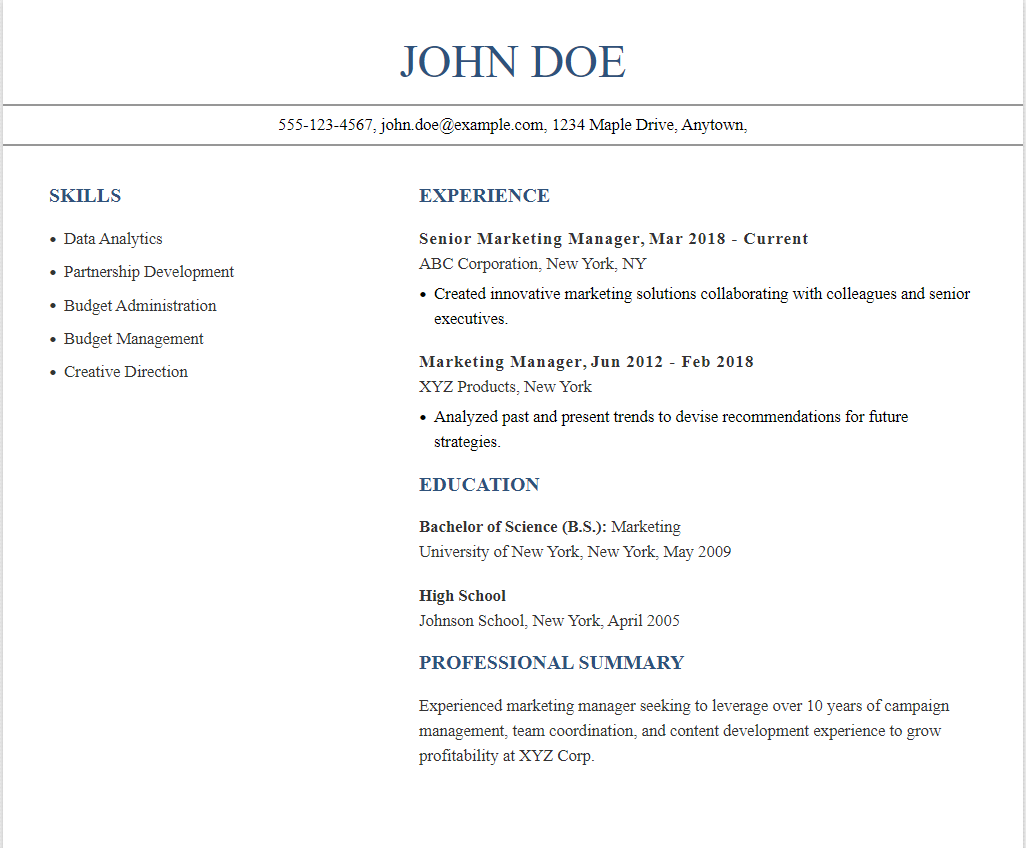
Chronological resume template
Here is a free chronological resume template for you: Chronological Resume Template
Also read: Top 10 Resume Editing Services of 2024
2. Functional resume
Functional resumes focus on your skills and experiences rather than listing your work history in order. This is one of the types of resumes that works well for people changing careers or those with gaps in their work history.
How to write a functional resume
- Start with a strong summary or objective statement highlighting your skills and qualifications.
- Organize your resume by functional categories, such as “Professional Skills” or “Technical Proficiency,” rather than listing jobs in chronological order.
- Provide specific examples of your achievements and experiences within each skill category.
- Include a brief section at the end for your work history, listing job titles, company names, and dates, but without providing extensive details.
- Tailor your resume to the job you’re applying for by emphasizing relevant skills and experiences.
You can take the help of AI resume builders or ChatGPT to make your resume-building process easier!
Example of a functional resume
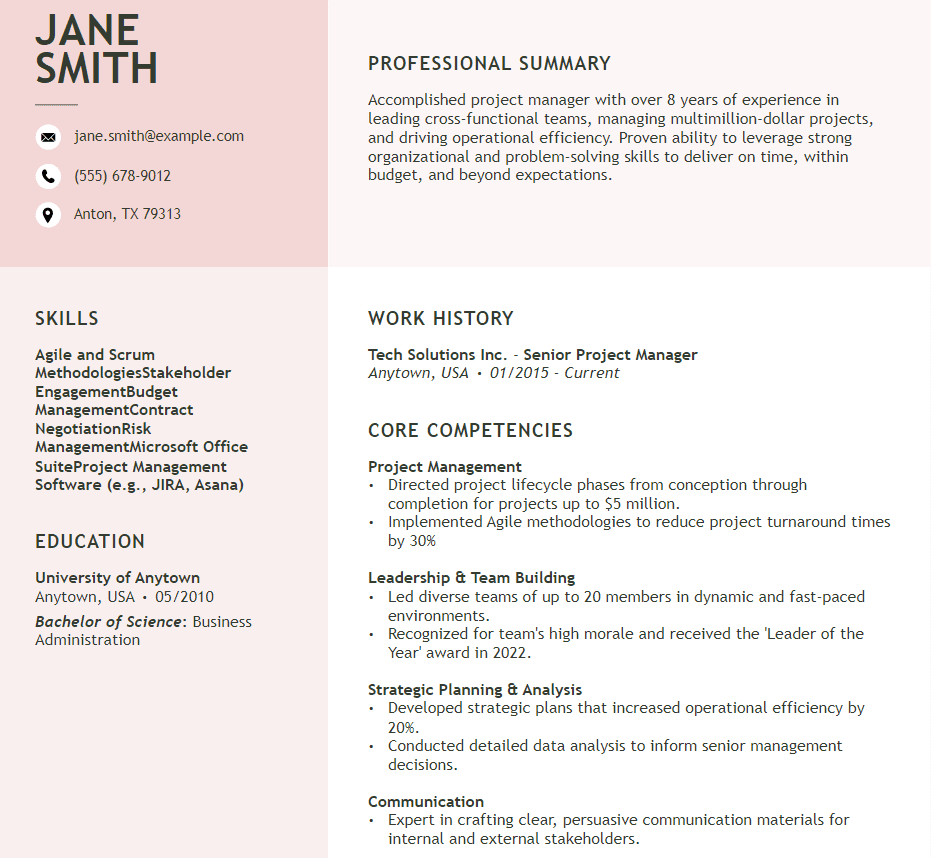
Functional resume template
Here is a free chronological resume template for you: Functional Resume Template
3. Combination resume
Combination resumes, as the name implies, blend the chronological and functional formats. They’re versatile and highly effective resume templates for individuals looking to emphasize particular skills alongside their work experience.
How to write a combination resume
- Start with a header containing your contact information.
- Write a professional summary or objective statement highlighting your key skills and career goals.
- List your relevant work experience, focusing on accomplishments rather than just job duties.
- Include a skills section showcasing your key abilities related to the job you’re applying for.
- Optionally, add an education section detailing your academic background.
- Tailor your resume to the job by emphasizing the most relevant experiences and skills.
Example of a combination resume
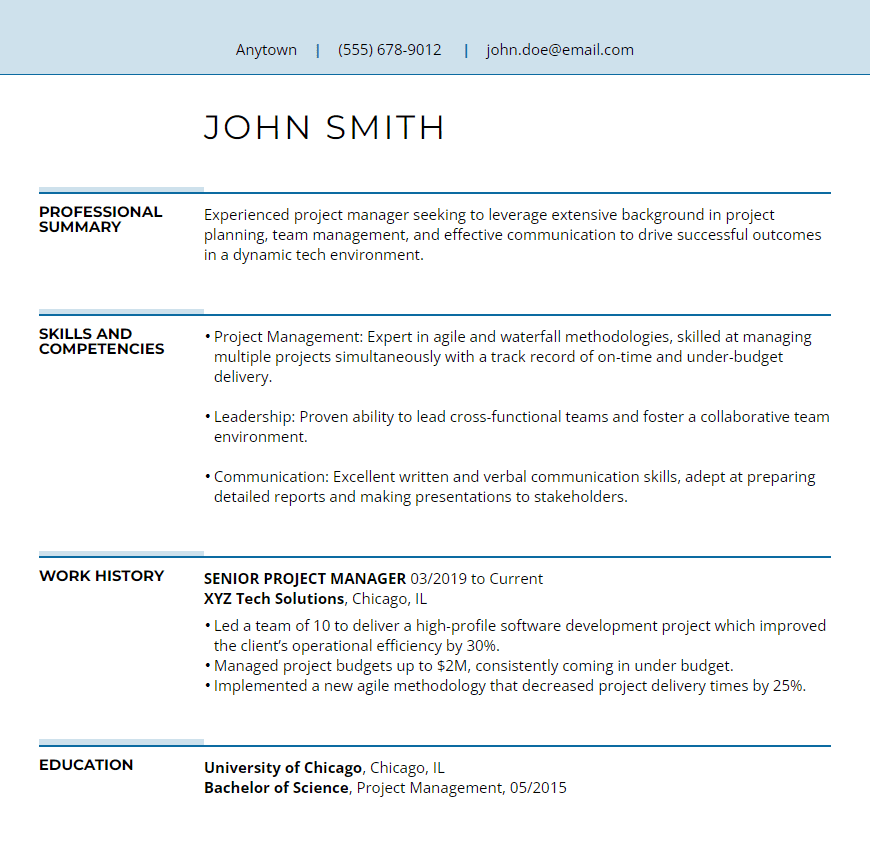
Combination resume template
Here is a free combination resume template for you: Combination Resume Template
4. Targeted resume
A targeted resume is customized to highlight the experience and skills that are directly relevant to the job being applied for. It requires more work but is highly effective, increasing the chances of catching the employer’s attention and landing the desired position.
How to write a targeted resume
- Understand the specific job you’re applying for and the skills and qualifications required.
- Tailor your resume to highlight the skills and experiences that directly relate to the job description.
- Adjust sections such as “Summary,” “Skills,” and “Work Experience” to emphasize relevant achievements.
- Incorporate keywords from the job posting to ensure your resume gets noticed by applicant tracking systems.
- Provide specific examples of how your skills and experiences have contributed to past successes.
- Double-check for any errors in grammar, spelling, or formatting to ensure a polished final product.
Example of a targeted resume
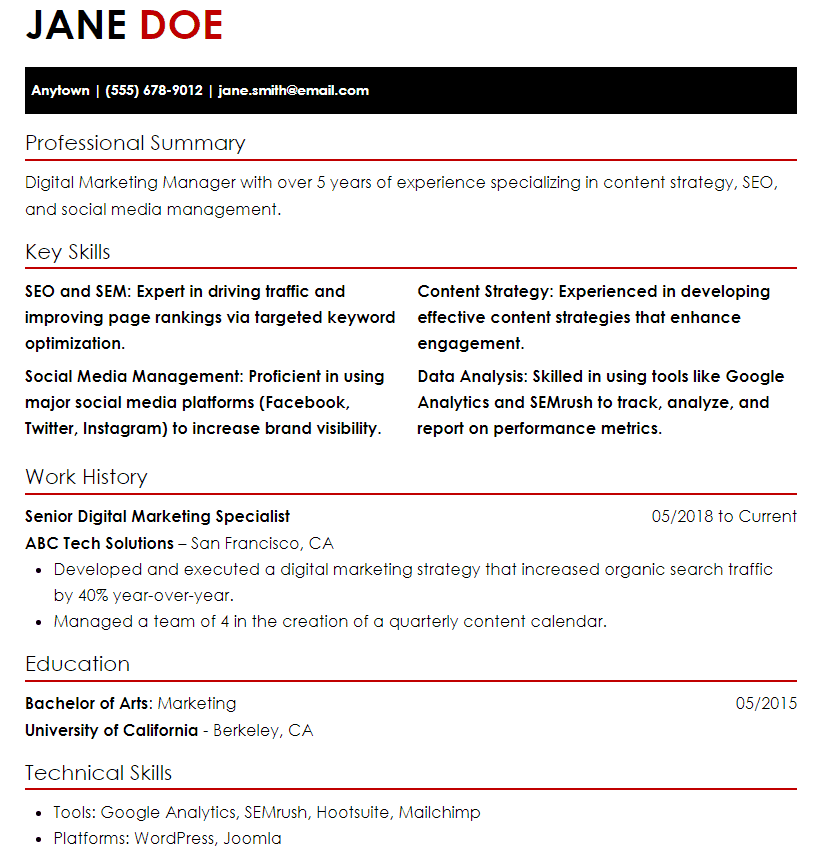
Targeted resume template
Here is a free targeted resume template for you: Targeted Resume Template
Also read: How to Edit and Expand Your Resume into a CV – PaperTrue
5. Video resume
A video resume lets you demonstrate your personality and communication skills through a video. It’s suitable for roles in media, communication, or design. Your video resume should be professional and brief, ideally under two minutes.
How to create a video resume
- Decide what information you want to include in your video resume, such as your introduction, skills, experiences, and achievements.
- Prepare a script outlining what you’ll say in each section of your video. Keep it concise and engaging.
- Find a quiet and well-lit space to record your video. Make sure the background is professional and not distracting.
- Use a good-quality camera and microphone to record your video. Make sure you test the equipment beforehand to ensure everything is working properly.
- Follow your script and record each section of your video resume. Speak clearly and confidently.
- Use editing software to trim any unnecessary footage and add any additional graphics or text to enhance your video.
- Watch your video resume and make any necessary edits. Once you’re happy with it, save and export the final version.
Example of a video resume
Video resume template
Here is a free video resume template for you: Video Resume Template
6. Infographic resume
An infographic resume creatively displays your work history, using images and graphics to highlight key achievements and skills. This format is particularly popular among professionals in creative fields such as graphic design, marketing, and public relations, as it allows them to showcase their talents and stand out from traditional resumes.
How to create an infographic resume
- Decide what information you want to include and how you want to visually represent it.
- Select an infographic resume template that fits your style and preferences.
- Collect your professional information, including education, work experience, skills, and achievements.
- Use design software or online editing tools to lay out your information in a visually appealing way.
- Personalize your infographic resume with colors, fonts, and graphics that reflect your personality and profession.
- Double-check your infographic resume for accuracy, clarity, and consistency.
Example of infographic resume
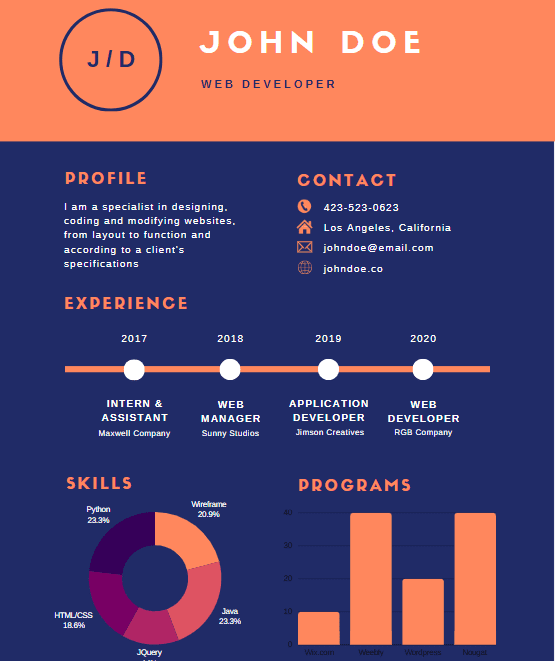
Infographic resume template
Here is a free video resume template for you: Infographic Resume Template
7. Online resume
An online resume is like having your own website where you can share not just your resume, but also your portfolio of work and even a blog. It’s a great way to give people a full picture of who you are professionally.
How to create an online resume
- Select a website or platform to create your online resume, such as LinkedIn, Canva, or a dedicated resume builder website.
- Choose a resume template that suits your style and profession from the available options.
- Input your personal information, educational background, work experience, skills, and any other relevant details into the template.
- Tailor your resume by adjusting font, writing styles, colors, and layout to make it visually appealing and professional.
- Proofread your resume carefully, checking for any errors or inconsistencies. Make necessary edits to ensure accuracy and clarity.
Example of an online resume
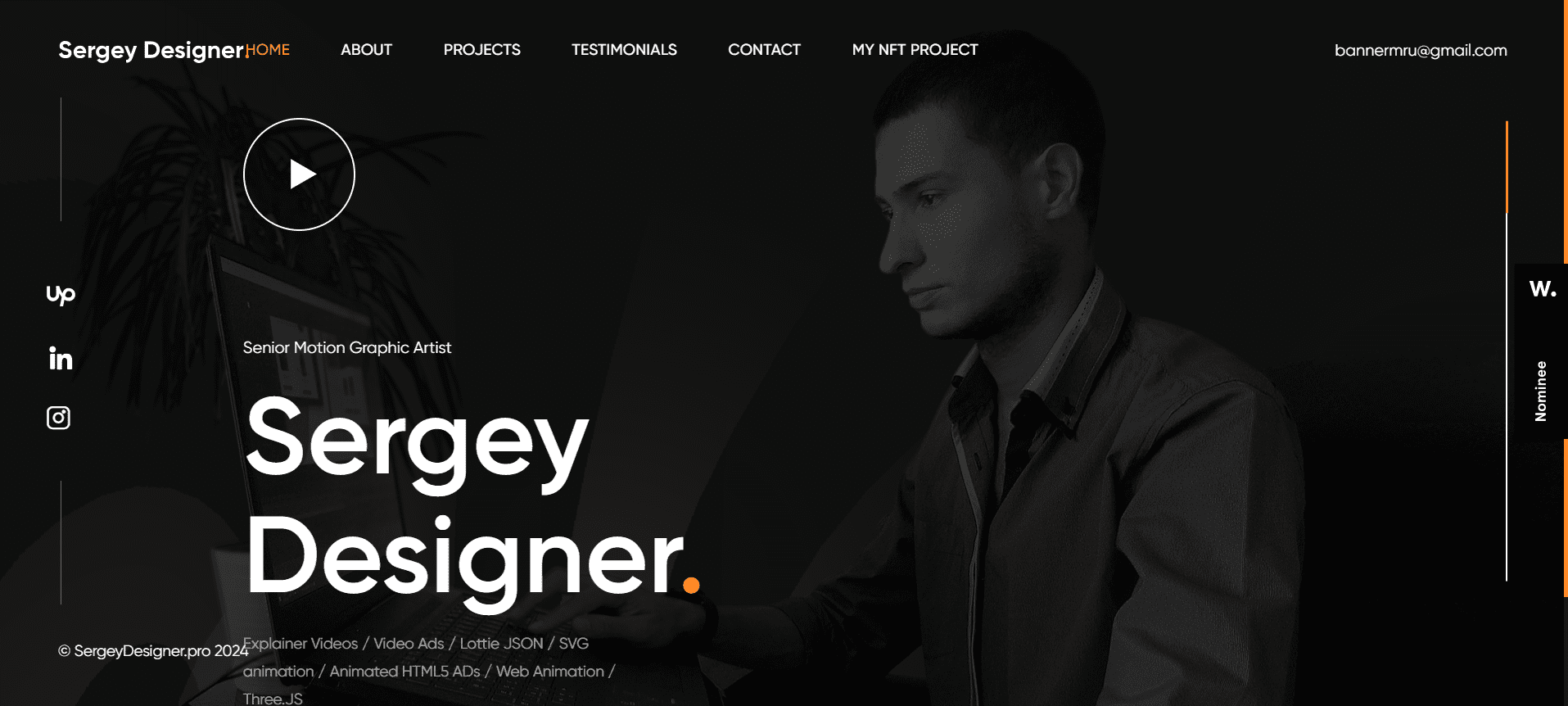
Link: https://sergeydesigner.pro/#About
Online resume template
Here is a free online resume template for you: Online Resume Template
Choosing the right type of resume format can significantly impact your job search success. Each of these 7 types of resume offers unique benefits and can be tailored to suit different career needs and stages.
If you want to make sure your resume looks professional and flawless, consider using PaperTrue’s expert editing and proofreading services. Our team can improve your resume, making it clearer, more impactful, and highly professional, so you leave the best impression on your potential employer!
Here are some more useful resources to help you:






